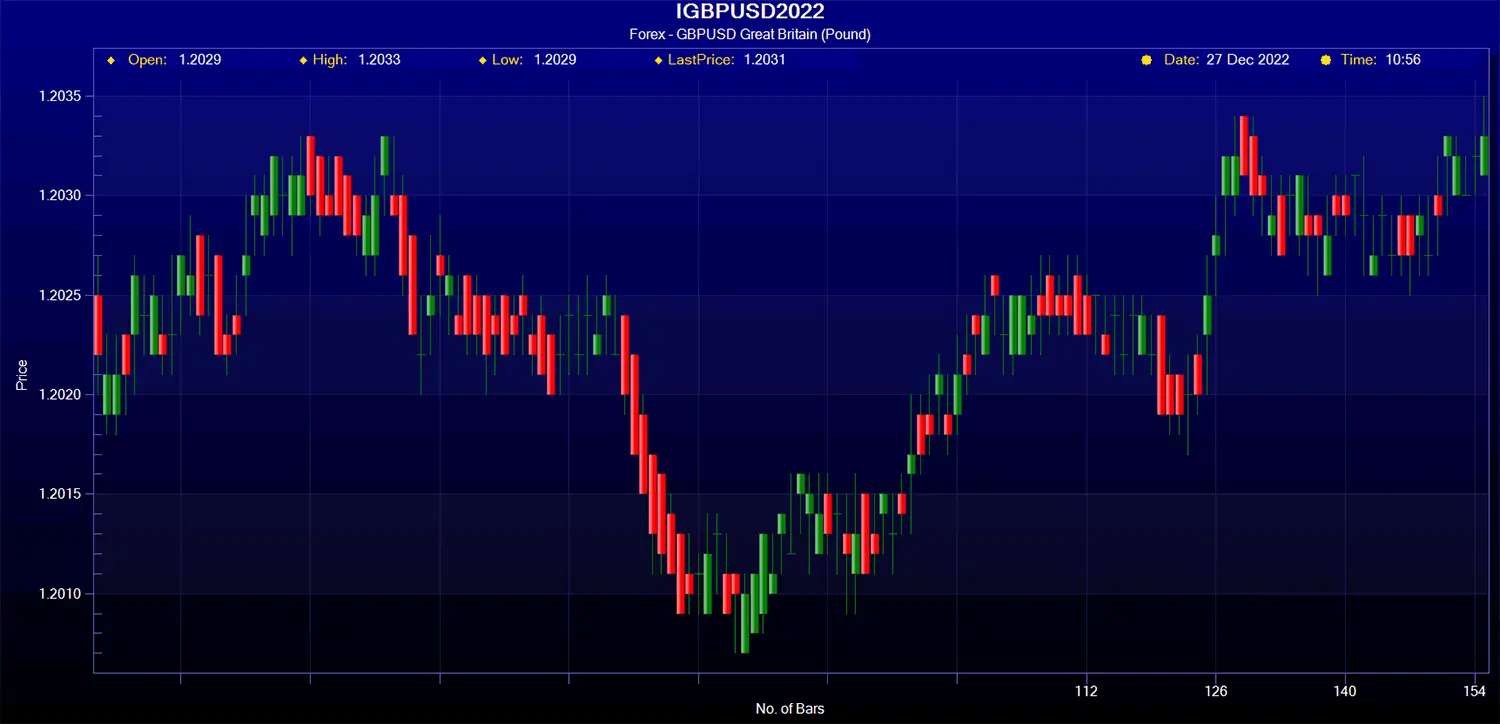Understanding how to analyze coin price movements is crucial for anyone serious about cryptocurrency investing. Whether you’re a beginner trying to make sense of volatile markets or an experienced trader looking to refine your strategy, mastering price analysis can significantly improve your investment outcomes.
The cryptocurrency market operates 24/7, with prices fluctuating based on numerous factors including market sentiment, technological developments, regulatory news, and broader economic conditions. Unlike traditional markets, crypto prices can experience dramatic swings within hours, making proper analysis essential for risk management and profit maximization.
In this comprehensive guide, you’ll discover proven methodologies for analyzing coin price movements, from fundamental analysis techniques to advanced technical indicators. We’ll explore the tools professional traders use, common mistakes to avoid, and actionable strategies you can implement immediately to make more informed investment decisions.
Fundamentals of Cryptocurrency Price Analysis
What Drives Coin Price Movements?
Cryptocurrency prices are influenced by a complex interplay of factors that savvy investors must understand. Supply and demand dynamics form the foundation of all price movements, but several specific elements unique to the crypto space amplify these basic economic principles.
Market sentiment plays an outsized role in cryptocurrency valuations. Unlike traditional assets with established valuation models, crypto prices often reflect collective emotions and expectations about future adoption and utility. This emotional component can create both opportunities and risks for investors who know how to read the market’s mood.
Technological developments significantly impact coin prices. Protocol upgrades, partnership announcements, and integration with major platforms can trigger substantial price movements. Smart investors monitor development activity, GitHub commits, and roadmap progress to anticipate potential catalysts.
Regulatory developments represent another critical factor. Government announcements about cryptocurrency regulation, central bank digital currency (CBDC) initiatives, and institutional adoption news can cause immediate and dramatic price reactions across the entire market.
The Role of Market Capitalization in Price Analysis
Market capitalization provides crucial context when learning how to analyze coin price movements effectively. A coin’s market cap determines its potential for growth and volatility characteristics. Large-cap cryptocurrencies like Bitcoin and Ethereum typically exhibit lower volatility and more predictable price patterns compared to smaller altcoins.
Mid-cap and small-cap coins often present greater growth potential but come with increased risk and volatility. These assets can experience rapid price appreciation during bull markets but may also face severe corrections during downturns.
Understanding market cap helps investors set realistic expectations and choose appropriate analysis techniques. High-cap coins may respond more to macroeconomic factors, while low-cap coins might be more sensitive to project-specific news and developments.
Technical Analysis: Reading the Charts Like a Pro

Essential Chart Patterns for Coin Price Analysis
Technical analysis forms a cornerstone of effective cryptocurrency trading. Chart patterns provide visual representations of market psychology and often repeat across different timeframes and assets. Mastering these patterns is essential when learning how to analyze coin price movements.
Support and resistance levels represent areas where price historically bounces or stalls. These levels act as psychological barriers and often become focal points for trading decisions. Identifying strong support levels helps investors determine optimal entry points, while resistance levels indicate potential exit opportunities.
Trend lines help identify the overall direction of price movement. Uptrends consist of higher highs and higher lows, while downtrends show lower highs and lower lows. Drawing accurate trend lines requires practice but provides valuable insights into market momentum.
Triangle patterns often precede significant breakouts. Ascending triangles typically indicate bullish continuation, while descending triangles suggest bearish momentum. Symmetrical triangles can break in either direction and require careful monitoring of volume and momentum indicators.
Key Technical Indicators for Cryptocurrency Analysis
Moving averages smooth out price action and help identify trends. The 20-day, 50-day, and 200-day moving averages are widely watched by traders. When shorter-term averages cross above longer-term ones, it often signals bullish momentum, while the opposite suggests bearish pressure.
Relative Strength Index (RSI) measures overbought and oversold conditions. RSI readings above 70 typically indicate overbought conditions, while readings below 30 suggest oversold scenarios. However, in strong trends, these levels may remain extreme for extended periods.
MACD (Moving Average Convergence Divergence) helps identify trend changes and momentum shifts. MACD crossovers and divergences often precede significant price movements, making this indicator valuable for timing entries and exits.
Volume analysis provides crucial confirmation for price movements. Strong volume typically accompanies legitimate breakouts, while weak volume may indicate false signals. Volume patterns can reveal accumulation and distribution phases that precede major price moves.
Fundamental Analysis in Cryptocurrency Markets
Evaluating Project Fundamentals
Fundamental analysis examines the underlying value and potential of cryptocurrency projects. This approach focuses on factors that could drive long-term adoption and price appreciation, providing a foundation for strategic investment decisions.
Team evaluation represents a critical component of fundamental analysis. Experienced developers, advisors with proven track records, and transparent communication from project leadership often correlate with long-term success. Research team backgrounds, previous projects, and their involvement in the cryptocurrency community.
Technology assessment requires understanding the project’s unique value proposition and competitive advantages. Evaluate the technology’s scalability, security features, and real-world applications. Projects solving genuine problems with innovative approaches typically demonstrate stronger long-term potential.
Tokenomics analysis examines the economic model underlying the cryptocurrency. Total supply, inflation mechanisms, utility within the ecosystem, and token distribution all impact long-term value. Well-designed tokenomics align incentives and create a sustainable demand for the asset.
Market Adoption and Partnership Analysis
Partnership announcements can significantly impact coin prices, but investors must distinguish between meaningful collaborations and marketing hype. Strategic partnerships with established companies, integration into existing platforms, and institutional adoption represent genuine catalysts for growth.
Developer activity provides insights into project health and long-term viability. Active development, regular updates, and growing developer communities suggest robust project fundamentals. Platforms like GitHub offer transparency into development progress and community engagement.
Real-world usage metrics reveal actual adoption beyond speculative trading. Transaction volume, active addresses, and network activity provide objective measures of ecosystem growth. Projects demonstrating consistent usage growth often outperform those driven purely by speculation.
Market Sentiment Analysis and Social Indicators
Understanding Market Psychology
Market sentiment analysis examines the collective emotions and opinions driving cryptocurrency markets. Since crypto markets are heavily influenced by sentiment, understanding these psychological factors is crucial for timing investments and managing risk.
Fear and Greed Index quantifies market emotions on a scale from extreme fear to extreme greed. Contrarian investors often use this indicator to identify potential buying opportunities during periods of extreme fear and to exercise caution during times of extreme greed.
Social media sentiment provides real-time insights into the market mood. Platforms like Twitter, Reddit, and Telegram host active cryptocurrency communities where sentiment shifts often precede price movements. However, investors must be cautious of manipulation and echo chambers.
News sentiment analysis evaluates how media coverage impacts price movements. Positive coverage typically drives buying interest, while negative news can trigger sell-offs. The key is distinguishing between temporary news-driven volatility and fundamental changes in project prospects.
Using On-Chain Analytics for Price Prediction
On-chain analysis examines blockchain data to understand network activity and investor behaviour. This approach provides unique insights unavailable in traditional markets, offering powerful tools for cryptocurrency price analysis.
The network value to transactions (NVT) ratio helps assess whether a cryptocurrency is overvalued or undervalued based on its network activity. High NVT ratios may indicate overvaluation, while low ratios could suggest undervaluation or limited network usage.
Active address counts reveal network growth and adoption trends. Increasing active addresses typically correlate with growing interest and long-term price appreciation, while declining activity may signal weakening fundamentals.
Large transaction monitoring tracks significant movements by whales and institutions. Large transactions often precede price movements and can provide early warnings of potential volatility or trend changes.
Advanced Strategies for Analyzing Coin Price Movements

Multi-Timeframe Analysis
Multi-timeframe analysis provides a comprehensive view of price action across different time horizons. This approach helps investors align short-term trading decisions with longer-term trends, improving overall success rates.
Daily charts reveal intermediate-term trends and key support/resistance levels. Most fundamental analysis aligns with daily timeframes, making these charts ideal for strategic positioning decisions.
Hourly charts help fine-tune entry and exit points within established trends. Day traders and swing traders often use hourly charts to identify the optimal timing for position adjustments.
Weekly and monthly charts provide the big-picture perspective essential for long-term investing. These timeframes reveal major trend changes and help investors avoid getting caught up in short-term noise.
Correlation Analysis with Market Leaders
Bitcoin correlation remains a crucial factor in cryptocurrency analysis. Most altcoins maintain a positive correlation with Bitcoin, especially during major market moves. Understanding these relationships helps predict how individual coins might react to Bitcoin price movements.
Sector analysis examines how different cryptocurrency categories perform relative to each other. DeFi tokens, gaming coins, and layer-1 protocols often move in similar patterns based on sector-specific news and developments.
Traditional market correlations have strengthened as institutional adoption increases. During periods of economic uncertainty, cryptocurrencies may behave more like risk assets, correlating with stock markets and responding to macroeconomic factors.
Common Mistakes to Avoid in Cryptocurrency Analysis
Overreliance on Single Indicators
Many investors make the mistake of basing decisions on single indicators or analysis methods. Confirmation bias leads traders to cherry-pick signals that support their existing beliefs while ignoring contradictory evidence.
Effective analysis combines multiple approaches. Technical analysis should complement fundamental research, while sentiment indicators provide additional context for decision-making. No single method provides complete market insight.
Backtesting strategies help validate analysis approaches before risking real capital. Historical data testing reveals whether analytical methods would have been profitable in past market conditions, helping refine approaches over time.
Ignoring Risk Management
Position sizing represents a critical component often overlooked by cryptocurrency investors. Even perfect analysis means nothing without appropriate risk management. Never risk more than you can afford to lose on any single trade or investment.
Stop-loss orders help limit downside risk when analysis proves incorrect. Setting predetermined exit points removes emotion from decision-making and prevents small losses from becoming catastrophic.
Diversification across different cryptocurrencies, timeframes, and strategies reduces overall portfolio risk. Avoid concentrating too heavily on any single asset or approach, regardless of how confident your analysis appears.
Read More: Day Trading Cryptocurrency Complete Guide for Beginners 2025
Tools and Resources for Effective Price Analysis
Essential Analysis Platforms
TradingView offers comprehensive charting tools with a wide range of technical indicators and drawing tools. The platform’s social features allow traders to share analysis and learn from experienced investors.
CoinGecko and CoinMarketCap provide essential market data, including prices, volume, market capitalization, and fundamental project information. These platforms offer API access for automated analysis and portfolio tracking.
Glassnode and Santiment specialize in on-chain analytics, providing institutional-grade data for advanced cryptocurrency analysis. These platforms offer insights unavailable through traditional charting tools.
Building Your Analysis Toolkit
News aggregators like CryptoPanic and The Block help monitor market-moving events across multiple sources. Staying informed about developments requires efficient information consumption methods.
Portfolio tracking apps like Blockfolio and Delta help monitor positions and analyze performance over time. These tools often include news feeds and basic analysis features integrated with portfolio management.
Educational resources from reputable sources help continuously improve analysis skills. Websites like Investopedia, cryptocurrency-specific educational platforms, and university courses provide structured learning opportunities.
Advanced Technical Analysis Techniques
Elliott Wave Theory in Cryptocurrency Markets
Elliott Wave Theory provides a framework for understanding market cycles and predicting potential price targets. This approach identifies repeating wave patterns that reflect market psychology and help forecast future movements.
Impulse waves typically consist of five sub-waves in the direction of the main trend. These patterns often coincide with strong fundamental developments and high-volume trading.
Corrective waves usually contain three sub-waves that move against the primary trend. Understanding these corrections helps investors identify optimal entry points within larger uptrends.
Fibonacci Analysis for Price Targets
Fibonacci retracements help identify potential support and resistance levels based on mathematical relationships found throughout nature. These levels often act as psychological barriers where price action pauses or reverses.
Fibonacci extensions provide potential profit targets for trending moves. Professional traders often use these levels to set profit-taking orders and manage position sizes.
Fibonacci time zones suggest when significant price movements might occur. While less reliable than price-based Fibonacci tools, time analysis can provide additional context for market timing.
Developing Your Personal Analysis Framework
Creating a Systematic Approach
Successful cryptocurrency analysis requires systematic methodology. Develop a checklist covering technical, fundamental, and sentiment factors relevant to your investment strategy and time horizon.
Documentation and review processes help improve analysis over time. Keep records of predictions, actual outcomes, and lessons learned from both successful and unsuccessful trades.
Continuous education remains essential in the rapidly evolving cryptocurrency space. New analytical tools, market dynamics, and investment approaches emerge regularly, requiring ongoing learning and adaptation.
Building Confidence Through Practice
Paper trading allows practice without financial risk. Use virtual portfolios to test analysis methods and refine approaches before committing real capital.
Start small when implementing new analysis techniques with real money. Gradually increase position sizes as confidence and competence develop through experience.
Learn from mistakes rather than avoid them entirely. Every investor makes errors, but successful ones learn from these experiences and adjust their approaches accordingly.
Conclusion
Learning how to analyze coin price movements effectively requires combining technical skills, fundamental research, and understanding market psychology. Success comes from developing systematic approaches, maintaining proper risk management, and continuously adapting to evolving market conditions.
The cryptocurrency market offers unprecedented opportunities for informed investors willing to invest time in proper analysis. While volatility creates risks, it also generates profit potential for those who understand market dynamics and timing.
FAQs
What are the most reliable indicators for analyzing coin price movements?
The most reliable approach combines multiple indicators rather than relying on any single tool. Moving averages help identify trends, RSI indicates overbought/oversold conditions, and volume confirms price movements. However, fundamental analysis examining project utility, team quality, and market adoption often provides the strongest foundation for long-term investment decisions.
How often should I analyze cryptocurrency prices?
Analysis frequency depends on your investment strategy and risk tolerance. Long-term investors might review positions weekly or monthly, focusing on fundamental developments and major technical levels. Active traders may analyze charts daily or even hourly, but over-analysis can lead to paralysis and poor decision-making.
Can technical analysis predict cryptocurrency price movements accurately?
Technical analysis provides probabilities rather than certainties. While chart patterns and indicators can identify likely price directions and key levels, cryptocurrency markets remain highly volatile and unpredictable. Successful traders use technical analysis as one tool among many, always maintaining proper risk management regardless of how confident their analysis appears.
What’s the difference between analyzing Bitcoin versus altcoins?
Bitcoin analysis often focuses on macroeconomic factors, institutional adoption, and broader market sentiment since it serves as the market leader. Altcoin analysis requires additional attention to project-specific fundamentals, including technology development, partnerships, and competitive positioning within specific blockchain sectors.
How do I stay updated on factors affecting coin prices?
Effective information management requires multiple reliable sources. Follow cryptocurrency news aggregators, project official channels, and reputable analysis platforms. Set up Google Alerts for specific projects, join relevant Telegram or Discord communities, and follow credible analysts on social media while maintaining a healthy scepticism about predictions and recommendations.
















